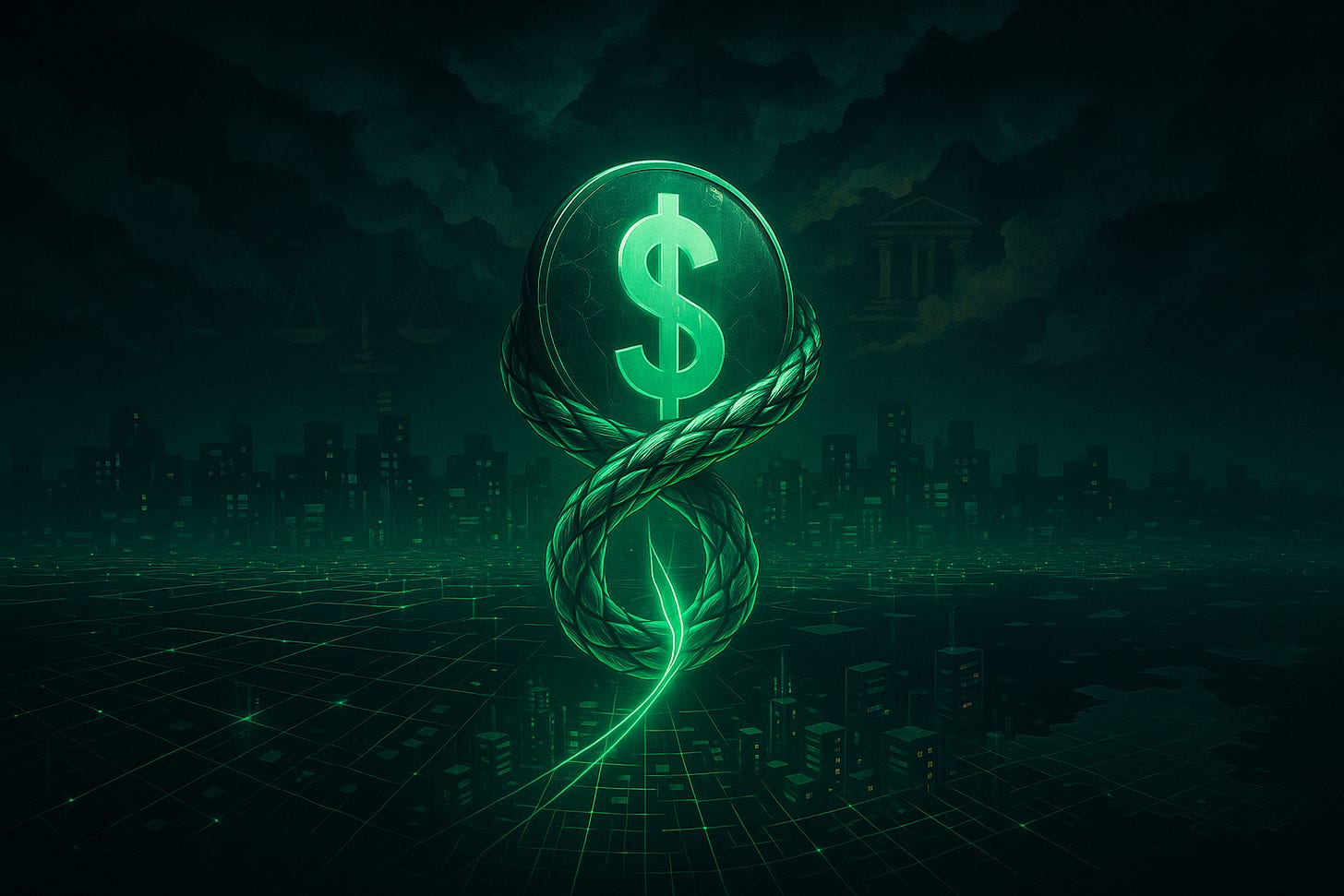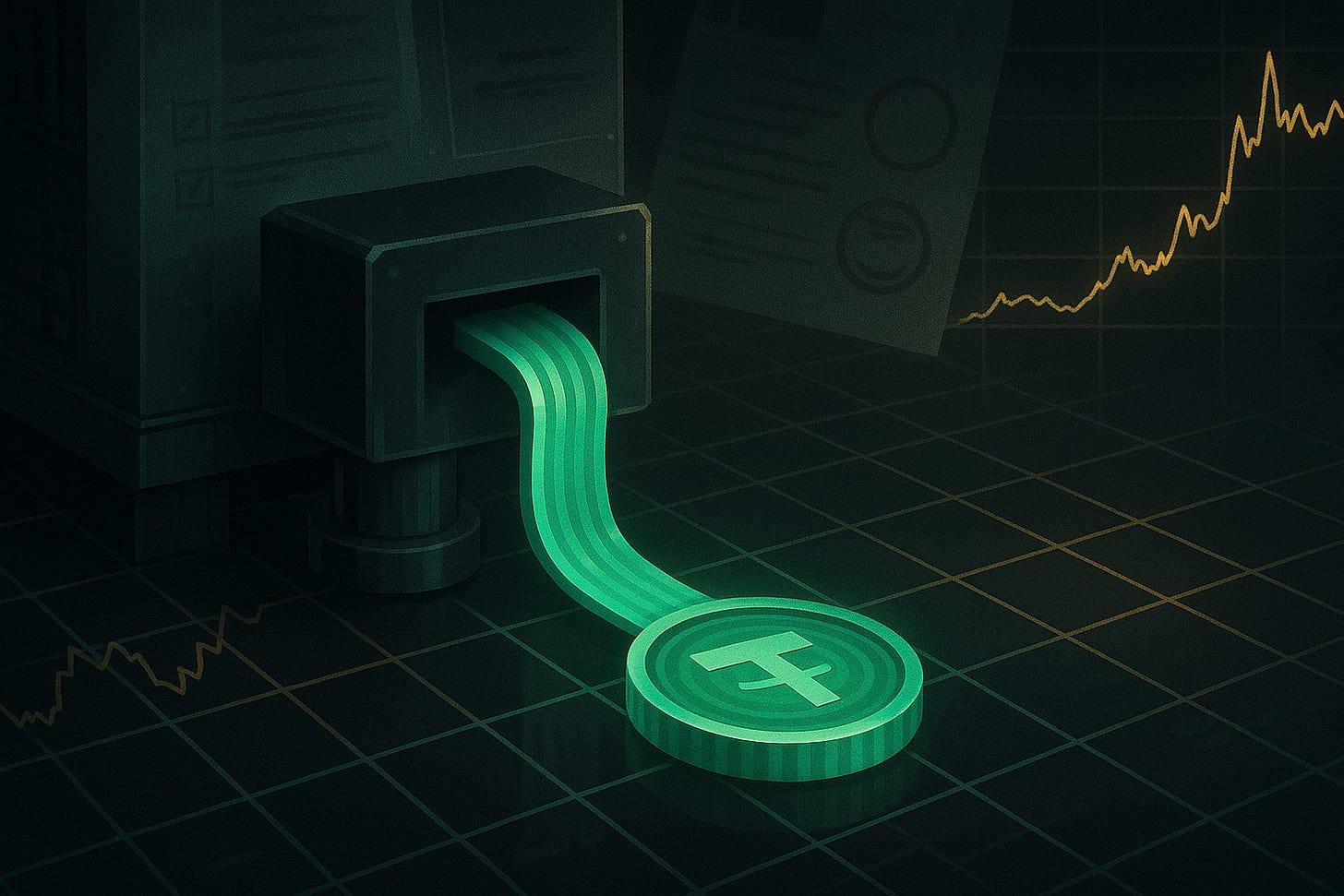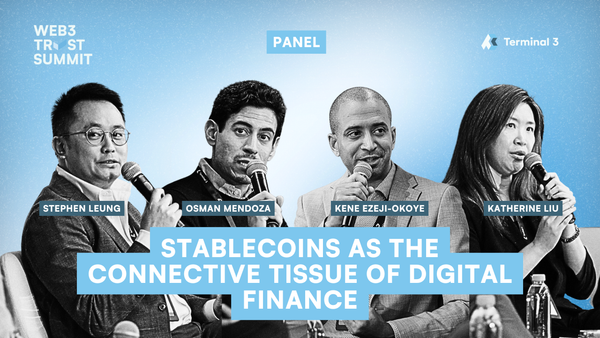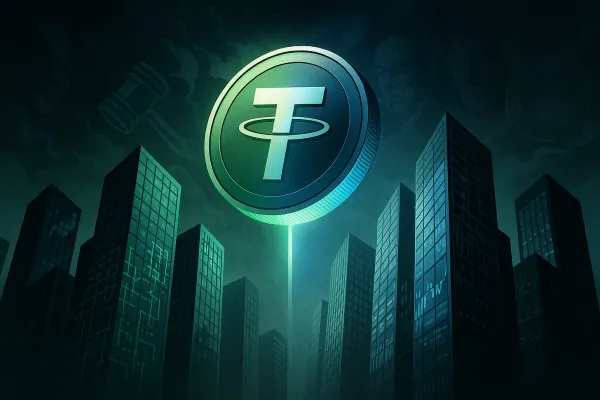How controversy from day one didn’t kill Tether: it created Web3’s top company
This is the second in our three-part series looking at Tether, the shadowy company behind the world’s most traded cryptocurrency—the USDT stablecoin.

GM,
This is the second in our three-part series looking at Tether, the shadowy company behind the world’s most traded cryptocurrency—the USDT stablecoin.
Previously, we looked at the successful but straightforward model that’s responsible for Tether’s astronomical profits, which reached $13 billion last year. This time, we focus on how Tether’s rise to prominence has been shadowed by suspicion and scandal, and take clues from its origins to question why it remains so dominant and indispensable.
Best,
What’s going on?

Tether is a certified OG when it comes to the crypto industry, which is famous for its volatility with some companies rising overnight and others seeming to disappear in a day.
It began life in 2014 as Realcoin, the first project of its kind to put real-world dollars on the blockchain so traders could move funds in and out of Bitcoin without the need for a bank.
That same year, it rebranded to Tether after deciding the name conjured up negative ‘altcoin’ connotations. The new name seemed to reflect its purpose with greater clarity.
“Our speciality at Tether is currencies on the blockchain, so Tether means a digital tie to a real-world asset and the digital assets that we're focused on is currencies,” its then-CEO told CoinDesk.
Slick rebranding aside, Tether’s rise has been anything but smooth. For more than a decade, critics have questioned whether every USDT is actually backed 1:1 by US dollars. Those doubts have been stoked by its continual avoidance of calls for audits, Tether has instead published partial attestations and unsupported claims.
Tether has been accused of minting tokens to pump Bitcoin and the crypto market generally, and it found itself in the crosshairs of the New York Attorney General.
Yet still, Tether’s utility as crypto’s de facto dollar outweighs those doubts. Traders continue to use it, exchanges still integrate it, and withdrawals rarely fail. That resilience under fire explains why Tether is the backbone of crypto markets despite many years of controversy.
SO WHAT?
1. Controversial from day one

Controversy is very much the go-to word for Tether’s story. From day one, critics doubted whether it really held the dollars it promised.
Its founders, including early Bitcoin pioneer Brock Pierce, claimed that every USDT token was backed 1:1, but their approach was very much ‘just trust us.’ That’s because Tether offered little more than short attestations as proof, including snapshots from accounting firms rather than full audits. Executives would avoid the question or denounce criticism as competitors throwing mud.
Things came to a head in 2017, however, as the price of Bitcoin surged from just under $100 in January to nearly $20,000 at the end of December.
Tether was being used to inflate Bitcoin’s price, according to an academic paper from University of Texas finance professor John Griffin, who is known for digging into financial fraud. The 66-page paper claimed the company ‘printed’ new USDT to support Bitcoin whenever the price dipped, using transaction history on the blockchain to support the thesis.
“It was creating price support for bitcoin, and over the period that we examined, had huge price effects. Our research would indicate that there are sophisticated people harnessing investor interest for their benefit,” Griffin told CNBC.
Tether survived the widely-read paper’s conclusions, but it was talk of the town in Web3. People in and around the industry would exchange tips about the company’s banking relationship woes, shadowy intermediaries and other scandalous details. Many felt it was a matter of time before the company imploded.
But it didn’t, and Tether only grew stronger. The secret to its resilience was not transparency but utility. Traders didn’t need to believe in Tether’s honesty, they just needed to know that their USDT could be redeemed or traded without issue. While the former could affect the latter, Tether continued to deliver for the traders who owned it.
Indeed, every scandal or accusation thrown at the company seemed to harden its reputation. In a market where bank accounts can vanish overnight and liquidity is everything, trust isn’t about glossy audits, it’s about the product actually working.
2. Surviving US regulatory heat

Tether critics did get their ‘told you so’ day, but it didn’t end as many expected.
The New York Attorney General launched an investigation into Tether and sister company Bitfinex, a crypto trading exchange, for dipping into customer reserves to fill an $850 million hole caused by a hack. (Side note: that’s something FTX would do years later.)
The case remained ongoing for nearly two years before the companies agreed to pay a fine of $18.5 million. The NYAG report claimed that Tether sometimes held no reserves to back its stablecoin’s dollar peg, that it had spent time without access to banking and it had misled its clients about its liquidity capabilities.
Tether also danced with the US CFTC (Commodity Futures Trading Commission), which protects the public from financial fraud, manipulation and abuses. It fined Tether $41 million in 2021 for making misleading statements about its reserves. The CFTC had repeatedly flagged USDT and other stablecoins as financial risks, a debate that culminated in the US passing the GENIUS Act to legalize stablecoins earlier this year.
Tether was able to avoid the full court press of US regulators thanks to its location. The company is based in the British Virgin Islands and Hong Kong, and it doesn’t serve US customers directly. That made it challenging for US regulators to use their full powers. Only now is Tether planning to introduce a US-focused stablecoin, thanks to the GENIUS Act.
Tether leaned into its outsider status. It tightened up disclosures enough to survive, while avoiding the kind of oversight that rival Circle must deal with for its USDC stablecoin business. Tether, instead, focused on its core appeal in Asia, Latin America and other markets where traders just wanted its token and regulators were slower or nonplussed. Many US traders would still use Tether’s USDT if they wanted to, despite considerable regulatory concern.
The lesson here is that the global nature of Web3 means any single country, including the world’s most powerful state, is powerless to stop a company if its product is popular enough.
The more US regulators fought it, the more Tether spotted gaps in the traditional banking system that it could fill and friendlier countries that could help legitimize its business away from America. The market has the ultimate say.
3. The ultimate paradox

On paper, Tether should not be trusted.
The premise for a stablecoin is simple. Prove that digital assets are backed by real-world money.
The company has faced allegations of market manipulation, paid multiple fines for misleading investors and still it is yet to deliver a full independent audit that would finally silence its longstanding audience of critics.
By contrast, its competitors are transparent and compliant. Circle, for example, went public with an IPO on the NYSE earlier this year which means that its finances and business details are publicly accessible by definition. That approach has helped it win serious traction among institutions looking to dip their toes into Web3.
Yet, the market chooses Tether.
Today, USDT accounts for more than two-thirds of all stablecoin trading volume. USDT is the default trading pair on most exchanges, and it is even an access point to the US dollar in some countries with weak local currencies.
That is the starkest contradiction in the Tether story, the gap between reputation and reality. The least trusted stablecoin is the world’s most indispensable.
Tether’s critics haven’t been silenced, by the way, they’ve just been drowned out by the market data, which shows Tether is the go-to choice. Traders don’t need to love, or even like, Tether. It just needs to work. Which it does.
It’s this paradox that makes Tether both fascinating and dangerous.
Its profits—$13 billion last year and $5.7 billion in the first half of 2025—are beyond what most public fintech companies could ever imagine. Tether owns more US Treasury bills than most countries. Yet, we know little about its inner workings and even whether its business foundations are sound.
If the company ever falters, the fallout would shake the entire crypto ecosystem beyond any price crash that’s been seen before. But its very survival, in spite of lawsuits, fines and constant speculation, has created a perception of invincibility.
Tether is not invincible, though. At least its assurance is not guaranteed until it produces an audit or tangible proof of its reserves. Its reputation among traders is secure, but how it fares in the increasingly institutionalizing world of Web3 is something that’s less sure.
News bytes
Tether released details of USAT, its planned US-regulated stablecoin that’s backed by US dollars—it also announced that a former member of President Trump’s digital asset advisory team will lead the project
Base, the blockchain run by Coinbase, is exploring the possibility of launching its own token—there’ll be plenty of interest in how a publicly traded business launch a token compliantly
Popular Web3 wallet Metamask launched its own stablecoin
US-focused Kalshi has rushed into the lead as the top predictions market, going from a mere 3% market share to over 60% today (we wrote about the state of play a year ago)
But rival Polymarket could be worth as much as $10 billion, according to a new funding round that the predictions market firm is raising
Australia is easing rules around stablecoins
That’s all for this week!
Share your feedback, questions or requests via email to: sowhat@terminal3.io




